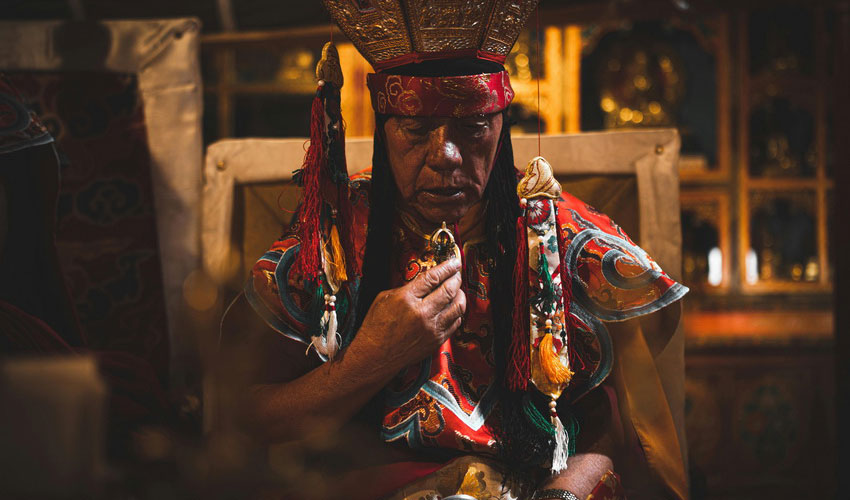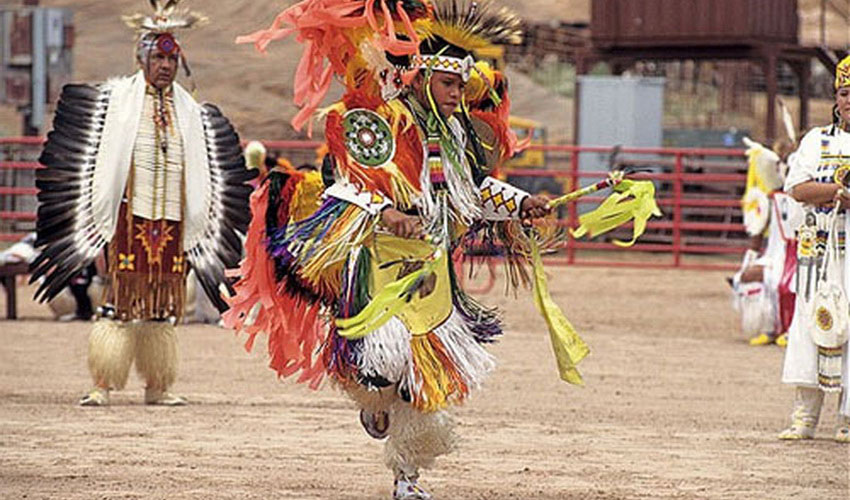Shamanism - One of the World’s Oldest Spiritual Practices
Ever since I first heard Jim Morrison speak and sing about Shamanism, I have been entranced by this ancient spiritual practice. His passionate words about connecting with the natural world, digging deep into the depths of the subconscious mind, and channelling the energy of the universe resonated deeply with me. Jim Morrison fearlessly embraced shamanism in his lyrics, vividly portraying altered states of awareness and making explicit connections to shamans and ancient indigenous spirituality. The idea of shamans serving as intermediaries between the physical and spiritual realms, healing the sick, divining the future, and communicating with ancestors and nature spirits captivates my imagination.
I am mesmerised by the rituals, ceremonies, and transformative experiences that shamanism offers, allowing people to explore the mysteries of existence and tap into their own inner power.The profound wisdom and profound teachings of shamans have inspired me to delve deeper into this mystical tradition, fuelling my curiosity and desire to learn more about the ways of the shaman. I am endlessly fascinated by the profound connection between mind, body, and spirit that shamanism emphasises, and the potential for personal growth, healing, and transformation that it offers. In exploring the mystical world of shamanism, I feel a sense of wonder, awe, and wonder that ignites my spirit and nourishes my soul.

Healed by a Shaman
About six years ago, I had the incredible opportunity to meet with a Cambodian shaman who had a profound impact on my life. I had been struggling with persistent migraines that were disrupting my daily routine and causing me immense pain. When I visited the shaman, he exuded a sense of calm and wisdom that immediately put me at ease. Through a series of rituals and ceremonies, he was able to tap into a deeper spiritual realm and address the root cause of my migraines. My eyes were closed all the time so I could not see what he was doing. However, I did smell and felt that he blew smoke in my face and over my head. I could feel a shift in my energy and a sense of relief wash over me as he worked his healing magic. After our session, my migraines became less frequent and less severe, eventually disappearing altogether. The experience was truly transformative and I will always be grateful for the healing power of the Cambodian shaman.
After this mind-boggling experience I learnt that Shamanism in Cambodia is closely tied to Buddhist beliefs and practices, with many shamans incorporating Buddhist rituals and beliefs into their practices. It is also intertwined with traditional animistic beliefs, which see the natural world as inhabited by spirits and deities. Despite the influence of modernisation and the spread of Christianity and other religions, shamanism remains an important aspect of spiritual life for many Cambodians, particularly in rural areas. Shamans often play a central role in important life events such as weddings, funerals, and healing ceremonies. Cambodian shamanism reflects the country's rich cultural heritage and spiritual traditions, providing a unique and important connection to the spiritual world for many Cambodians.
History of Shamanism
Shamanism is one of the oldest spiritual practices in the world, dating back thousands of years. It is a belief system that is rooted in the idea that everything in the world is interconnected, and that humans have the ability to communicate with the spirit world. Shamans are the key figures in this practice, acting as intermediaries between the spiritual and physical realms. Shamanism can be traced back to ancient cultures all over the world, including Siberia, Mongolia, Africa, and North and South America. The word "shaman" originates from the Siberian Tungus tribe and refers to a person who has the ability to enter altered states of consciousness to communicate with the spirit world. Shamanic practices vary widely depending on the culture in which they are practiced, but they often involve rituals, ceremonies, and healing practices. In many indigenous cultures, shamans play an important role in maintaining the balance of the community and acting as healers, spiritual guides, and storytellers.

Different Types of Shamans
There are many different types of shamans, each with their own unique practices and traditions. Some common types of shamans include:
- Traditional Healers: These shamans use herbs, plants, and other natural remedies to heal physical and spiritual ailments.
- Visionaries: These shamans have the ability to receive visions and messages from the spirit world, which they use to guide and advise their communities.
- Dream Interpreters: These shamans interpret dreams to gain insight into a person's past, present, and future.
- Weather Shamans: These shamans work with the elements to predict and control the weather, ensuring a successful harvest and favourable conditions for the community.
Shamanic Culture
Shamanism is deeply rooted in the cultures in which it is practiced, and shamans are often highly respected members of their communities. They are seen as spiritual leaders, healers, and protectors, and are often called upon to perform rituals and ceremonies for important events such as births, weddings, and funerals. Shamans often undergo extensive training and initiation processes to develop their abilities and skills. These may involve fasting, meditation, vision quests, and other forms of spiritual practice. They may also receive guidance and teachings from experienced shamans within their community.
Healing Practices
The healing practices of a shaman are rooted in the belief that all beings are interconnected and that illness is often caused by imbalances in these connections. One of the key practices of a shaman is journeying, a trance-like state in which the shaman communicates with spirits and receives guidance on how to heal a person. During a journey, the shaman may travel to the spirit world to retrieve lost fragments of a person's soul or consult with spirit guides who can offer insights into the root cause of their illness. By addressing the spiritual aspects of a person's ailment, the shaman believes they can facilitate healing on a deeper level. Another important aspect of shamanic healing is the use of plant medicine. Shamans often work with plants and herbs that have been used for centuries for their medicinal properties. These plants are believed to have healing powers that can help restore balance and harmony to the body and spirit. The shaman may create a special concoction or perform a ritual with the plant medicine to help alleviate a person's symptoms and promote healing.
In addition to journeying and plant medicine, shamans may also use rituals, ceremonies, and energy work to facilitate healing. Rituals and ceremonies are often performed to honour and connect with the spirits, while energy work involves manipulating the flow of energy through a person's body to remove blockages and restore balance. By combining these various healing practices, the shaman is able to address the physical, emotional, and spiritual aspects of a person's ailment and promote holistic healing. Shamans are also known for their ability to work with the elements of nature, such as fire, water, earth, and air. These elements are believed to have their own healing properties and can be used to cleanse and purify a person's energy field. For example, a shaman may perform a fire ceremony to release negative energy or use water to wash away emotional blockages. By working in harmony with nature, the shaman is able to harness the healing power of the elements to facilitate healing and transformation. The healing practices of a shaman are deeply rooted in the belief that all beings are interconnected and that illness is often a result of imbalances in these connections. By working with spirit guides, plant medicine, rituals, ceremonies, and the elements of nature, the shaman is able to address the physical, emotional, and spiritual aspects of a person's ailment and promote holistic healing. Through their unique abilities and connection to the spirit world, shamans offer a powerful and transformative form of healing that has been practiced for centuries by indigenous cultures around the world.

Use of Herbs
In their practices, shamans often rely on the healing properties of plants and herbs to treat ailments, promote spiritual growth, and connect with the spirits of nature. The use of plants and herbs in shamanic rituals is based on the belief that these substances possess powerful energetic properties that can help to cleanse, heal, and protect people on a physical, emotional, and spiritual level. Shamans are often referred to as "plant doctors" or "herbalists" due to their deep knowledge of the natural world and its ability to provide healing and insight. One of the most widely used plants in shamanic practices is ayahuasca, a powerful hallucinogenic brew made from the ayahuasca vine and chacruna leaves. Ayahuasca is used in traditional ceremonies to induce a deep state of altered consciousness, allowing shamans to communicate with spirits, gain insight into the causes of illness, and facilitate spiritual growth and transformation. Another common herb used by shamans is Sage, which is burned as a cleansing herb to purify spaces and individuals of negative energy. Blue Sage is often used in smudging rituals to clear stagnant energy and create a sacred space for spiritual work. Shamans also use a variety of other herbs, such as cedar, Sweetgrass, and tobacco, for their cleansing and protective properties.
In addition to herbs, shamans often work with plant allies such as trees, flowers, and roots to enhance their spiritual practices. For example, cedar trees are believed to be powerful protectors and are often used in rituals to create a shield of spiritual protection. Similarly, the sacred lotus flower is revered for its ability to symbolise spiritual enlightenment and rebirth, and is used in ceremonies to promote inner transformation. Shamans also make use of medicinal plants and herbs to treat physical illnesses and imbalances in the body. Plants such as chamomile, echinacea, and peppermint are commonly used for their healing properties and ability to support the body's natural healing processes. Herbal remedies are often prescribed by shamans as part of a holistic approach to health and wellness, which takes into account the interconnectedness of the mind, body, and spirit.
In summary, the use of plants and herbs in shamanic practices highlights the close relationship that shamans have with the natural world and the healing powers that it provides. By working with plants as allies and guides, shamans are able to tap into the wisdom of nature and utilise its energy to promote healing, transformation, and spiritual growth. As we continue to explore the ancient wisdom of shamanism, we can learn valuable lessons about the importance of connecting with the natural world and harnessing its healing powers for the benefit of all beings.
“There are things known and things unknown and in between are the doors.” - Jim Morrison






















